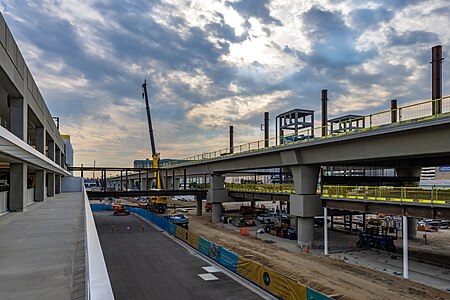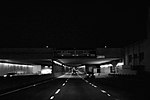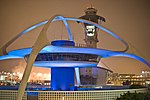LAX West Intermodal Transportation Facility
LAX Automated People Mover stationsLos Angeles International AirportPages with non-numeric formatnum argumentsRailway stations scheduled to open in 2024Use mdy dates from August 2022 ... and 1 more
Westchester, Los Angeles

The LAX West Intermodal Transportation Facility (also known as the West ITF or the LAX Economy Parking facility) is a large parking structure with a kiss and ride area and access to the LAX City Bus Center and nearby hotels.The four-story, 1,700,000 square feet (160,000 m2) facility cost US$294.1 million to build and opened on October 19, 2021.
Excerpt from the Wikipedia article LAX West Intermodal Transportation Facility (License: CC BY-SA 3.0, Authors, Images).LAX West Intermodal Transportation Facility
94th Street, Los Angeles Westchester
Geographical coordinates (GPS) Address Nearby Places Show on map
Geographical coordinates (GPS)
| Latitude | Longitude |
|---|---|
| N 33.94981 ° | E -118.38998 ° |
Address
LAX Economy Parking
94th Street 6100
90045 Los Angeles, Westchester
California, United States
Open on Google Maps









